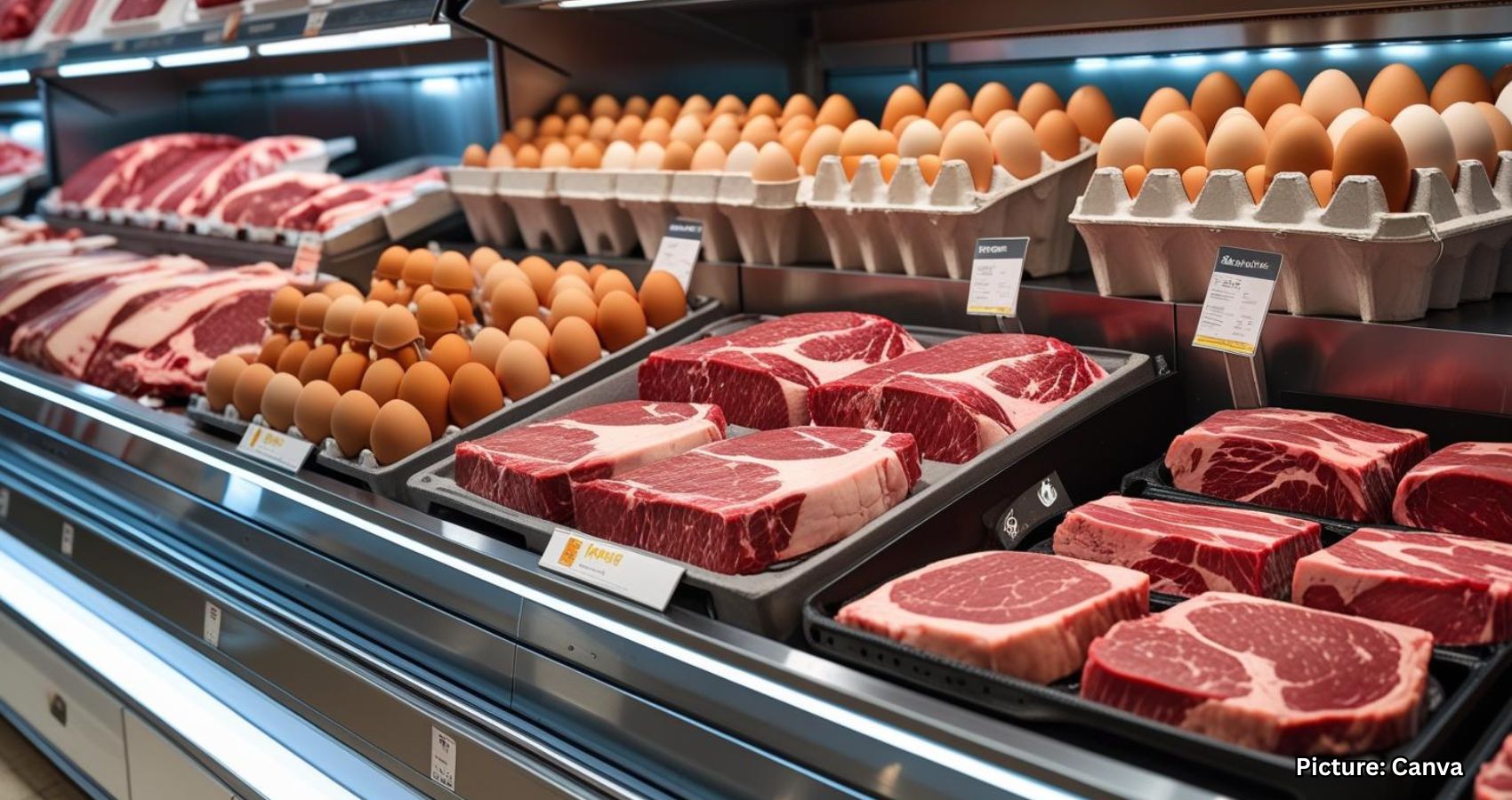Beef prices in the United States have reached record highs, with an almost 9% increase since January, complicating the ability to decrease them compared to other food items like eggs.
The United States is facing unprecedented beef prices, mirroring a previous spike that affected the egg market. While egg prices have since declined after avian flu outbreaks and recovery in supply, beef prices have climbed to record levels. As of now, beef is retailing at $9.26 per pound, with data from the Department of Agriculture indicating a nearly 9% increase since the beginning of the year.
Recent data from June’s consumer price index reveals that steak prices have surged by 12.4% and ground beef by 10.3% over the past year. This presents a challenging scenario for consumers and the market, with solutions not easily found.
Experts suggest that reducing beef prices is complex. Michael Swanson, the chief agriculture economist at Wells Fargo, describes the cattle industry as akin to the ‘Wild West,’ unlike the more structured egg market, which is often managed more like ‘Corporate America.’
The surge in beef prices has been brewing for a decade, driven by shrinking cattle herds, ongoing drought conditions, and increased imports, all while demand remains robust. Tyson Foods CEO Donnie King recently highlighted these unprecedented market conditions during an earnings call, stating that these are the toughest the beef industry has faced.
According to the American Farm Bureau Federation (AFBF), cattle herd sizes are at their lowest in 74 years, with many ranchers opting out due to dwindling profitability. Despite record prices, cattle farmers face slim margins thanks to high supply costs. Sustained droughts have impacted pasture lands, resulting in costly feed arrangements instead of free grazing, further adding to their challenges.
Imported beef now plays a significant role, accounting for approximately 8% of U.S. beef consumption, with countries like Argentina, Australia, and Brazil contributing to the supply. Meanwhile, U.S. beef exports have decreased by 22% in May compared to last year, as highlighted by AFBF data. Michael Swanson notes that this shift toward international beef supply has come as a surprise, deviating from the previously balanced import-export landscape.
Despite these record-breaking prices, beef consumption in the U.S. remains strong. To combat high prices, some retailers like Walmart are adapting by creating direct supplier partnerships. Walmart recently inaugurated a self-owned beef facility in Olathe, Kansas, aiming to streamline operations and reduce costs by removing intermediaries. John Laney, executive vice president of food at Walmart, emphasized the benefits of this new setup, stating it would provide more consistency, transparency, and value to customers.
The potential for price decreases in the beef market is largely dependent on consumer habits, according to Bernt Nelson of the AFBF. Historic trends show that consumer demand for meat climbs with improved financial situations and recedes with economic downturns. As household financial uncertainties grow, beef demand could decline, which might eventually impact producers and ranchers negatively.
Michael Swanson warns of the risks tied to the cyclical nature of the market. “We are nearing the peak of the current cycle, and there is concern within the industry of being trapped with overpriced cattle as prices inevitably start to fall,” he notes, underscoring the delicate balance the industry must maintain to avoid significant losses.
According to CNN, there is cautious optimism that consumer behavior, market developments, and strategic retailer adaptations may eventually stabilize this volatile market.
Source: Original article

